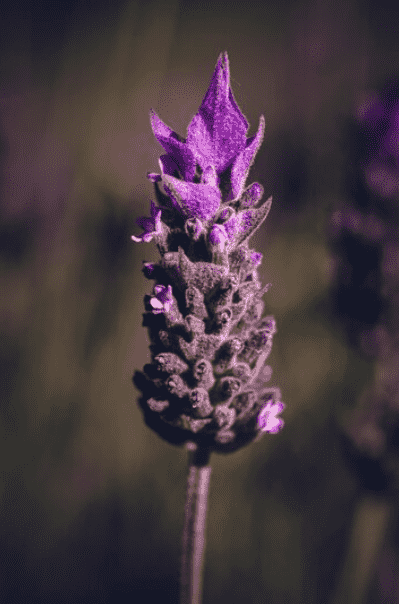Lavender has become an increasingly popular herb in recent years, used for everything from aromatherapy to culinary dishes. Some alternative medicine enthusiasts have even begun exploring smoking lavender recreationally or for potential therapeutic benefits. But is lighting up some dried lavender actually good for you? This comprehensive guide examines the potential pros and cons of smoking lavender to help you make an informed decision.

Pros
- Potential Relaxation and Anxiety Reduction
- Possible Improvement in Sleep Quality
- Potential Pain Relief and Anti-Inflammatory Effects
- Possible Mood Enhancement
- Potential Appetite Suppression
Cons
- Limited Data on Safety
- Respiratory Risks
- Allergic Reactions
- Interactions With Medications
- Cognitive Function Impairment
- Dependence and Abuse Risk
Table of Contents
What is Lavender?
Before analyzing the effects of smoking it, we must first understand lavender itself. Lavender is a fragrant herb derived from the flowers of plants in the genus Lavandula. There are over 40 species of lavender, with the most common being Lavandula angustifolia (English lavender) and Lavandula intermedia (lavandin).
Lavender has a long history of use dating back over 2,500 years to ancient Egypt, Phoenicia, and Arabia. The fresh or dried flowers and essential oils extracted from lavender plants have applications in aromatherapy, skincare, cooking, and natural medicine.
Some of lavender’s most research-backed uses include:
- Aromatherapy and relaxation – Lavender’s pleasant, floral scent has calming effects. Studies confirm lavender aromatherapy can reduce anxiety, stress, and improve sleep.
- Culinary applications – Lavender is used to flavor baked goods, juices, teas, and more. It has a subtle, aromatic taste profile.
- Medicinal properties – Both oral lavender supplements and topical use of lavender oils/lotions may help relieve pain, inflammation, and skin issues like burns or eczema.
Now that smoking herbs for relaxation or medicinal purposes has become a hot wellness trend, lavender has become a prime target. But what does the research say about the safety and efficacy of smoking lavender specifically? Let’s analyze the potential pros and cons.
The Trend of Smoking Lavender
There are two primary methods for smoking lavender:
- Dried lavender flowers – The dried buds, spikes, or flowers of the lavender plant can be smoked on their own or blended with other dried herbs.
- Lavender cigarettes/joints – Pre-rolled lavender cigarettes or joints consist of lavender flowers plus additional ingredients like damiana, mugwort, rose, and more.
The recent motivation for smoking lavender includes:
- Stress relief and relaxation – Smoking lavender may confer relaxing effects similar to lighting aromatherapy candles or inhaling essential oils.
- Health benefits – Some alternative health practitioners claim lavender smoking can relieve pain, inflammation, nausea, headaches, and more ailments.
- Alternative to tobacco – Smoking lavender provides the ritual/routine of smoking without inhaling tobacco.
So what does the research say about these purported benefits, and what are the potential downsides to consider?
Pros of Smoking Lavender
Smoking lavender enthusiasts boast benefits ranging from reduced anxiety to enhanced sleep. While research is still emerging, some scientific evidence and anecdotal reports suggest potential pros including:
Potential Relaxation and Anxiety Reduction
One of lavender’s primary components is the terpenoid alcohol linalool, which constitutes up to 60% of the essential oil extracted from the flowers. Studies demonstrate linalool has an xiolytic (anti-anxiety) effect by inhibiting neurotransmitters like glutamate and elevating GABA activity.
Results confirm lavender aromatherapy benefits anxiety and chronic stress, so inhaling linalool-rich smoke may produce similar effects. Smokers often report feeling markedly relaxed after a lavender cigarette.
Possible Improvement in Sleep Quality
In line with its anti-anxiety properties, both lavender aromatherapy and oral lavender supplements appear to act as mild sedatives. Researchers believe components like linalool may interact with receptors for GABA, the brain’s primary inhibitory neurotransmitter crucial for regulating sleep cycles.
Multiple studies found lavender enhances deep (slow wave) sleep, lengthens sleep duration, and improves symptoms of insomnia in women. Though more research is needed, smoking lavender’s sleep-promoting effects may result from consuming higher doses of lavender/linalool than used in most aromatherapy studies.
Potential Pain Relief and Anti-Inflammatory Effects
As an ancient medicinal plant, lavender has traditional applications relieving pain, inflammation, and gastrointestinal issues. Modern research indicates lavender massage/aromatherapy can benefit migraines and menstrual cramps, while oral lavender may aid IBS pain, wound healing, and recovery post-surgery or childbirth.
Though most pain-oriented studies use topical lavender oil, smoking introduces substantially more lavender compounds to the bloodstream than skin contact alone. Anecdotally, some chronic pain sufferers report relief after smoking lavender. More research is warranted investigating lavender flowers’ analgesic and anti-inflammatory effects when inhaled as smoke.
Possible Mood Enhancement
Scientists speculate one mechanism behind lavender’s health benefits is interacting with neurotransmitters like serotonin and dopamine to improve mood. A 2014 study found lavender aromatherapy boosted self-reported moods and reduced depressive symptoms long-term in postpartum women.
Though research is limited, many casual lavender smokers likewise report noticeable improvements in mood, outlook, and sense of wellbeing after smoking. More placebo-controlled trials are needed, but the mood-enhancing potential of lavender is promising.
Potential Appetite Suppression
Lastly, early cell studies report lavender oil may influence levels of ghrelin and leptin, two hormones regulating appetite and satiety signals. One analysis noted lavender lowered appetite and reduced weight gain in neurotransmitter-deficient mice.
While human data is lacking, some smokers comment that lighting up a lavender joint modestly suppresses appetite, especially for sweets. If borne out in clinical studies, this benefit could support weight management.
Cons of Smoking Lavender
Despite these theoretical upsides, ample concerns also surround smoking lavender. Before lighting up, weigh considerations like:
Limited Data on Safety
Firstly, minimal research exists analyzing the safety and pharmacokinetics of smoking lavender over both short and long-term periods. Most medicinal lavender studies examine aromatherapy, oral doses, or topical application rather than introducing lavender compounds via inhaled smoke directly into the lungs.
We lack robust clinical trials documenting potential outcomes or side effects among regular, long-term lavender smokers. Individual sensitivity varies greatly, and pre-existing conditions may increase risks. Consult a healthcare provider before trying, especially if pregnant, breastfeeding, or taking medications.
Respiratory Risks
Though considered gentler than tobacco, any kind of smoke inhalation can irritate the lungs over time. Smoking lavender introduces hot herbal particulate matter into delicate respiratory tissues. For pre-existing conditions like asthma, lavender’s anticholinergic compounds may trigger bronchospasms or worsen symptoms.
Anecdotal reports suggest heavy use can sometimes provoke coughing, lung inflammation/infection, and increased phlegm or mucus production. More research is needed, but those with respiratory issues should exercise caution with lavender smoking.
Allergic Reactions
Rarely, people demonstrate allergy or sensitivity to lavender. Reactions may manifest as skin irritation, hives, swelling, digestive upset, headache, or respiratory changes. People with known lavender allergies should avoid smoking it entirely.
For others, initial experimental use should involve only 1-2 puffs to test for potential allergic response prior to heavy use. Discontinue immediately if any hypersensitivity symptoms arise, like itching, rash, wheezing, or shortness of breath.
Interactions With Medications
Lavender may interact poorly with select pharmaceuticals. Sedative effects could compound side effects of sleep, anxiety, or pain medications. Lavender component linalool also inhibits glutamate, so lavender smoke might reduce effectiveness of antidepressant medications.
Always disclose lavender smoking to healthcare providers and pharmacists. Seek medical advice before combining with sedatives like benzodiazepines, barbiturates, sleep aids, or opioids due to overdose and respiratory depression risks.
Cognitive Function Impairment
In aromatherapy studies, lavender demonstrates sedative properties. At higher doses, its components may cause drowsiness or temporary cognitive impairment. Smoking before driving, operating heavy machinery, or performing other attention-intensive tasks is unadvisable.
Note any decrease in coordination, reaction time, memory, analyzing skills, or altered time perception after smoking lavender, even if subjective relaxation increases. Don’t smoke before responsibilities requiring full faculties like parenting infants or making crucial decisions.
Dependence and Abuse Risk
Some sources caution against long-term recreational lavender smoking due to psychological dependence or abuse potential. Lavender incites neurochemical changes that may become a crutch for coping with life’s daily stressors outside healthier mechanisms like counseling, exercise, spiritual practices, etc.
Additionally, while lavender shows promise managing discrete anxiety episodes or sleep troubles, relying on smoking to mask underlying mood or other psychiatric disorders long-term can delay seeking proper care. Monitorlavender usage for increasing dosage, continued smoking despite side effects, or inability to function without it.
Alternatives to Smoking Lavender
If you’re seeking lavender’s benefits without the risks of smoking, consider gentler alternatives like:
Lavender Aromatherapy
Inhaling lavender essential oil via candle diffuser, handheld inhaler, or room diffuser remains supported for relaxation and sleep enhancement. This spares lungs smoke exposure while providing ambient aromatic benefits.
Consuming Lavender Tea or Tinctures
Oral lavender doses as tea, tinctures, or encapsulated supplements may confer benefits like easing headaches, anxiety, nausea, and indigestion while avoiding smoke-related risks. Lavender tea boasts the most evidence for safety and efficacy.
Topical Lavender Creams or Lotions
For body pains, skin irritation, or surface inflammation, try lavender-infused lotions, creams salves, or DIY bath bombs. Besides avoiding respiratory risks of smoking, topical lavender demonstrates antimicrobial and wound healing properties, especially for burns and skin disorders.
Conclusion
In closing, while smoking lavender holds theoretical benefits like relaxation, pain and inflammation relief, and improved sleep and moods, robust clinical evidence is lacking. Without sufficient safety data, risks like lung inflammation, allergic response, sedative side effects, and medication interactions may outweigh benefits.
Always exercise caution with unfamiliar herbal consumption methods. Seek professional medical advice if considering adopting lavender smoking for a health condition. For most consumers, safer ways to leverage lavender’s advantages without smoking include aromatherapy, oral consumption as tea or tinctures, or topical use.
FAQs:
Is smoking lavender addictive?
Like many herbs, lavender lacks physically addictive compounds or withdrawal symptoms. But some sources believe psychological dependence can develop over frequent, long-term use. Monitor for increasing dosage, inability to stop usage despite side effects, or lavender smoking hindering occupational/academic functioning or relationships.
Can smoking lavender help quit tobacco?
Some quitters attempt to replace nicotine addiction with lavender or other herbs. Success varies individually; lavender smoking elimination tobacco pros like reduced cancer risks but retains drawbacks like airway irritation. You may use lavender smoking as a bridge while tapering nicotine patches/gums, but don’t prolong lavender smoking indefinitely.
How does smoking lavender compare to other herbs?
Compared to smoking herbs like marijuana, lavender is unlikely to cause psychotropic, hallucinogenic effects or impaired coordination. Its mild GABA-agonist activity makes it more relaxing than stimulant herbs like damiana or ginseng. Start with small doses since lavender potency between plant species varies dramatically.
Are there legal considerations?
Currently, lavender is legal to purchase and smoke without restrictions in most regions. Unlike marijuana, it falls outside drug scheduling and controlled substance categories. Still, verify regional legality before ordering dried lavender or bringing lavender products across international borders to avoid legal risks.
Can smoking lavender impact mental health?
In aromatherapy studies, lavender alleviates anxiety and depression symptoms without significant side effects. However, relying on lavender smoking to cope long-term may delay formal psychotherapy/counseling and pharmaceutical options for mental health disorders. Monitor mood symptoms and function level closely and seek professional support if not improving.





